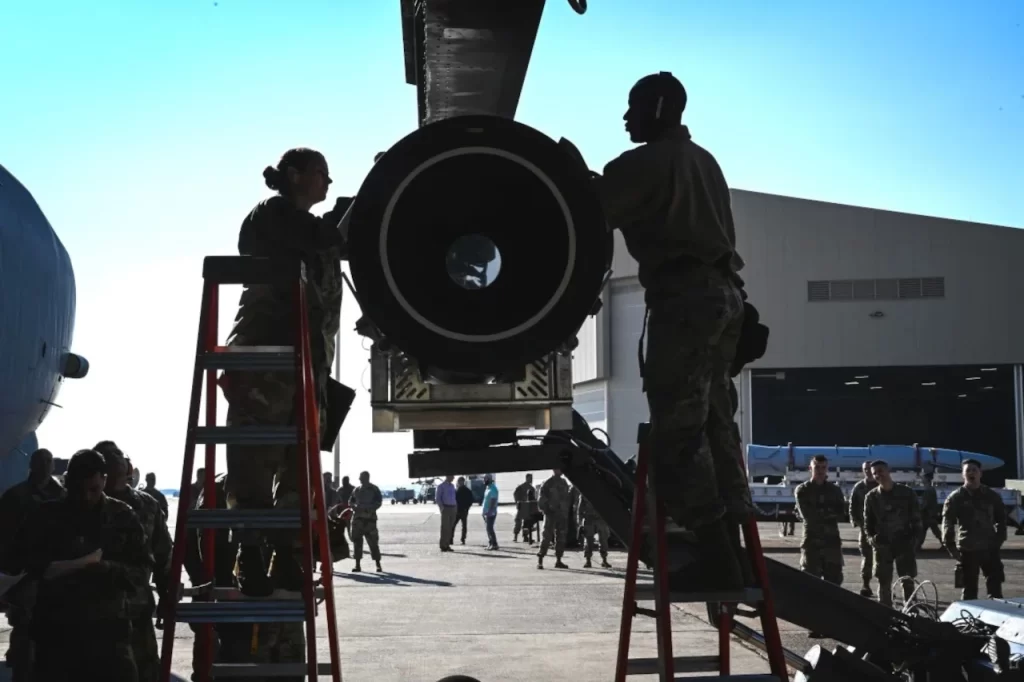The US Air Force reported that on December 9, 2022, a successful flight test of a fully completed combat prototype of the promising American AGM-183A Air-Launched Rapid Response Weapon (ARRW) air-launched hypersonic missile was carried out for the first time. During the test, an experimental missile over the Point Mugu naval missile range on the Pacific coast of the United States successfully separated from the carrier-strategic bomber Boeing B-52H Stratofortress and, having launched a solid-fuel booster, reached a speed of M> 5, the hypersonic warhead separated, flew according to a given program and exploded in a given area (apparently, the Pacific Ocean).
Previously, on May 14, 2022, the first successful flight test of an ARRW was conducted without a payload in the form of a hypersonic warhead. Before that, in 2021, three ARRW test launch attempts ended without results – in two cases (April 5 and December 15), the rocket did not separate from the carrier at all, and in another case (July 28), the booster did not work. In all tests, the Boeing B-52H Stratofortress bomber from the 419th Flight Test Squadron of the 412th Test Wing of the US Air Force from Edwards Air Force Base was used as a carrier.
Structurally, ARRW is a solid-fuel air-launched missile with a warhead in the form of a detachable hypersonic warhead Tactical Boost Glide (TBG), created under the auspices of the Defense Advanced Research Projects Agency (DARPA) of the US Department of Defense. The missile should be equipped as a matter of priority for strategic bombers B-52N and B-1B, while it was reported that it was being created in a non-nuclear version. The B-52N aircraft will be capable of four ARRW missiles on an external sling – two on each pylon.
According to US Air Force representatives, the ARRW missile should have a maximum firing range of about 1,600 km and a warhead speed between M=6.5 and M=8.
Presumably, the first aerodynamic tests of the TBG warhead were carried out in March 2019. From June 2019 to May 2021, the US Air Force conducted seven aerodynamic tests (without dropping) of the AGM-183A ARRW on the B-52H aircraft.

Lockheed Martin carried out the initial phase of ARRW R&D under a $480 million contract awarded by the US Air Force in August 2018, which was due to be completed by December 2021. In December 2019, the US Department of Defense issued a new contract to Lockheed Martin Corporation for the full-scale development, testing and preparation for mass production of the ARRW rocket for a total of $ 988.832 million. The work should have been carried out very quickly and completed by December 31, 2022, but in the end, this deadline still needs to be met. Earlier it was also reported that work on the TBG warhead was behind schedule by about a year.
In June 2020, the US Air Force planned to acquire eight prototypes of the ARRW missile (four for testing and four spares) for flight testing, with flight testing in fiscal years 2021 and 2022 and with the start of the missile entering service (meaning the transfer of four replacement prototype missiles) to achieve Initial Operational Readiness (IOC) with the start of the fiscal year 2023 (i.e. October 1, 2022, calendar year).
Budget Pangs
However, in March 2022, when it was time to approve the US defence budget for the fiscal year 2022, the US Congress cut funding for the ARRW programme by more than half of what it had been previously. Following the end of FY2021, more than $300 million had been spent on ARRW, which was the amount the US Air Force sought for FY2022. The acquisition of the first 12 production ARRW missiles will cost $161 million. However, in the budget for the fiscal year 2022 (FY2022), Congress has only budgeted $80 million, and they have put every single penny of those allocated funds exclusively into the ARRW R&D programme to enable further further rocket testing.
To finish research and development, including purchasing one prototype rocket, the United States Air Force requested a budget of only 114.98 million dollars for the programme year of FY2023. However, in the end, money for ARRW acquisitions for FY2023 was hived off as a separate line item in the approved defence budget. Despite this, the Air Force will be able to continue ARRW R&D funding in FY2023, as monies have been committed for this purpose in the budget for FY2022. Because of this, it is difficult to estimate when the ARRW will begin mass manufacturing and when it will put the weapon into service.
